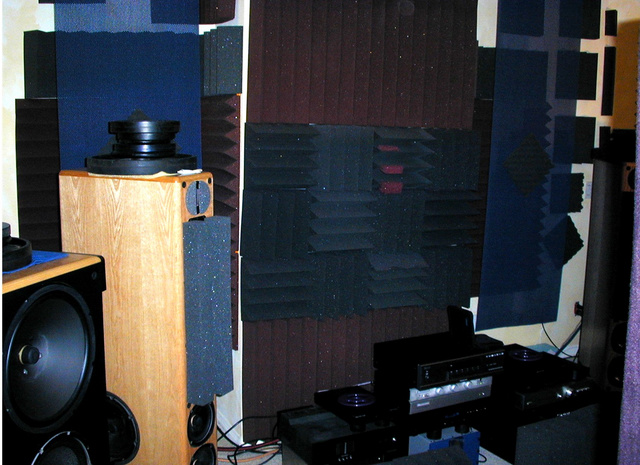No scoff intended Brian.
I found that the waveguides accentuated 1 -3 khz and diminished 4 - 8 khz in a way that made the speakers too shouty sounding. Pot tweaking didn't help because turning up the tweeter and/or turning down the midrange didn't fill the hole at 4 - 8 khz. My RM30s are an early pair so I suspect the crossovers are not optimized for the waveguides.
They sound wonderful with 2" X 24" foam strips on each side of the mid ribbons so no big deal. I'm a happy RM30 camper.
Russ
I wonder where that "foam strip idea" came from aa
My first pair of RM40s was the "experimental" pair. I think back then I called them "lapels".

Later on a pair of RM30's I went "more dense" on the foam and moved them in to the edges of the planar ribbons.

It is the opposite of the CDWG however, in that it blocks/absorbs horizontal dispersion.
There are two ways to go.
1) Block all (or as much) dispersion as possible to reduce reflected to direct sound
2) Cause a wide spectrum frequency dispersion to reduce reflective hot spots
I like #1 for nearfield 2 channel audio, single sweet spot only listening because it gives you more musical accuracy to the source
I like #2 for farfield, HT, and multiple listener applications since it offers more satisfaction to more than one person.
Russ, yes your pair were built before the CDWG's were available, and I don't recall them being re-equalized for the CDWG, which might be why they lean towards sans guides.
The beautiful thing now is the DigiLOG DOXO where B, puts WaveGuide On, and WaveGuide Off equalization in the box.
Best of both worlds.
